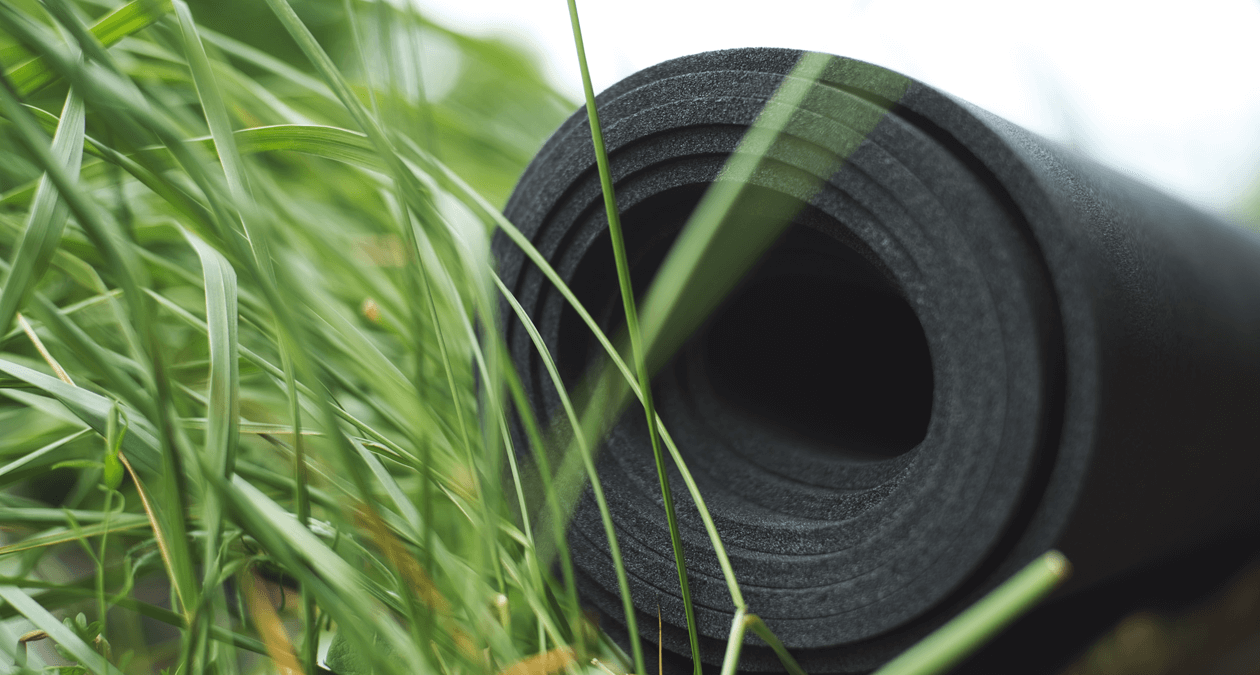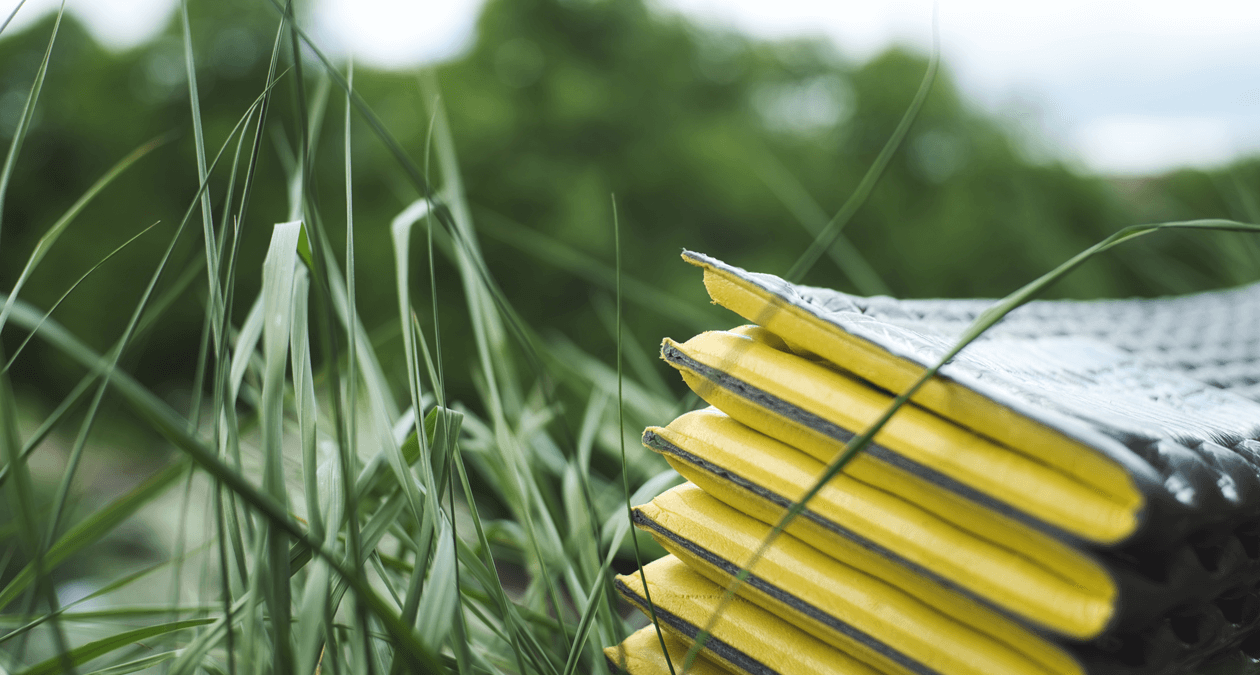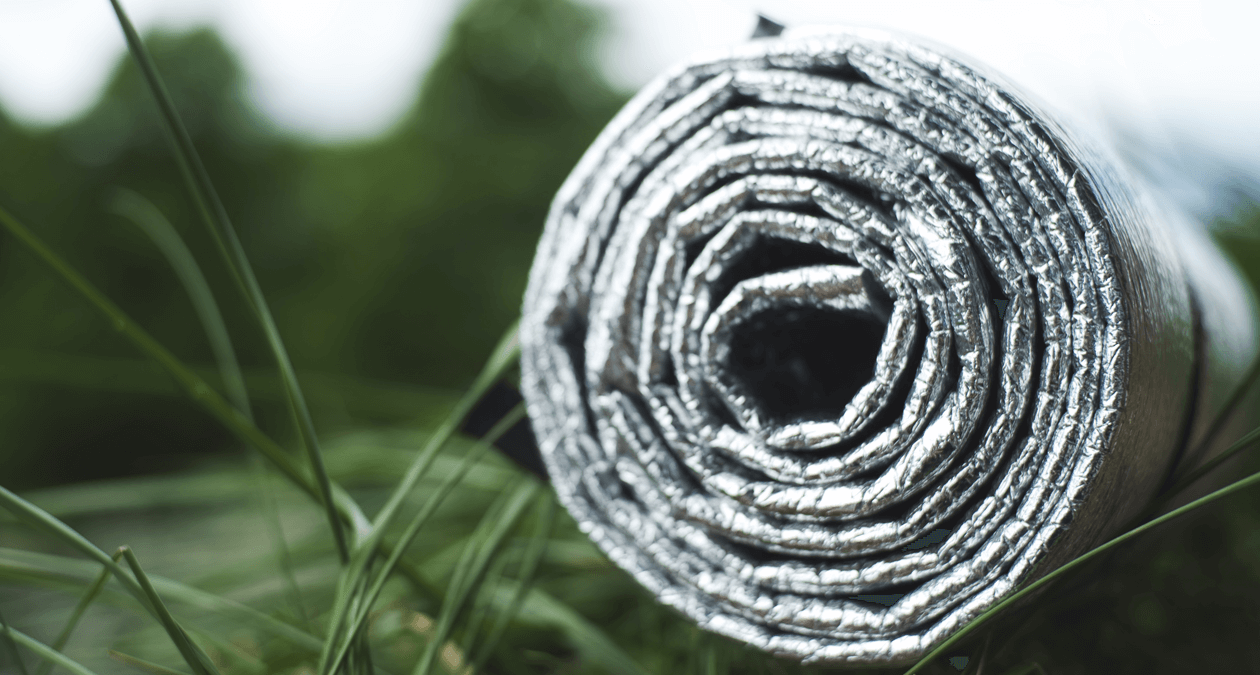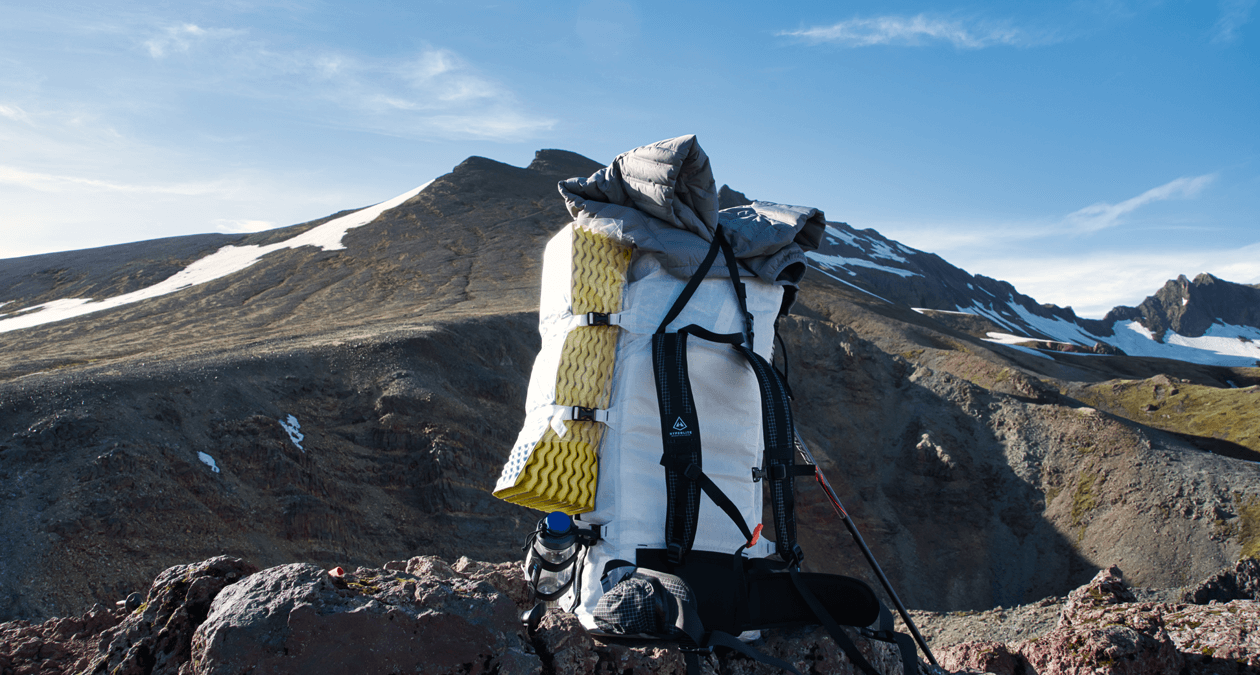
A foam pad doesn’t compress down like an inflatable mattress does. You’ll need to carry it on the outside of your pack. They’re also nowhere near as comfortable as an inflatable mattress as you tend to feel the ground beneath you. But it’s easy to make it work. Same as with an inflatable mattress you will need to choose a good spot to set up camp. Try to find a spot that is nice and fluffy. Also, a foam pad can easily be trimmed down to your needs. During the summer, I sometimes only use ¾ part of a foam pad – Torso length. A foam pad is not prone to punctures and it can also serve as a sitting mat during breaks throughout the day. Foam pads come in different styles: Theres the classic EVA foam pad which is available in different thicknesses. Then there is the structured EVA foam pad which uses an egg carton like structure to create loft. It will trap air which increases insulation. Also there are foam pads which have a reflective coating on one side which will bounce back your body heat, further increating its functionality.

The system I have come to love is slightly heavier, but it provides me with extra comfort and insulation from the cold ground. I use a ¾ inflatable Therm-a-Rest Prolite Plus, which only covers my torso length. Underneath I’ll use a Therm-a-Rest Z-Lite SOL. That way I have the best of both worlds and I can use the foam pad to take a quick nap after lunch or use it to sit on wet ground. This system also works very well with a quilt as I can feed the quilt’s elastic bands underneath the inflatable pad. I invest the weight saved by using a quilt into the weight of the inflatable mattress and end up with a system that weighs roughly the same as if I were using a regular sleeping bag with a zipper and hood. For me it’s not just about saving weight but also about finding ways to increase my comfort while still staying on the light side.

When I started getting deeper into backpacking adventures, I started with a really minimalistic ultralight kit which had a base weight of about 4kg. That way it was easy for me to figure out in which areas I would like to improve my comfort. Now I am at a base weight of 5-6kg, depending on where my travels take me. On some trips I will need things like snow shoes, crampons or an ice axe, which will of course increase my base weight. As you can see on the photo below, I like to use a 3L ziploc bag over my sleeping pad to stop the rain from running into the cracks. That way my foam pad will be dry when I need it.























